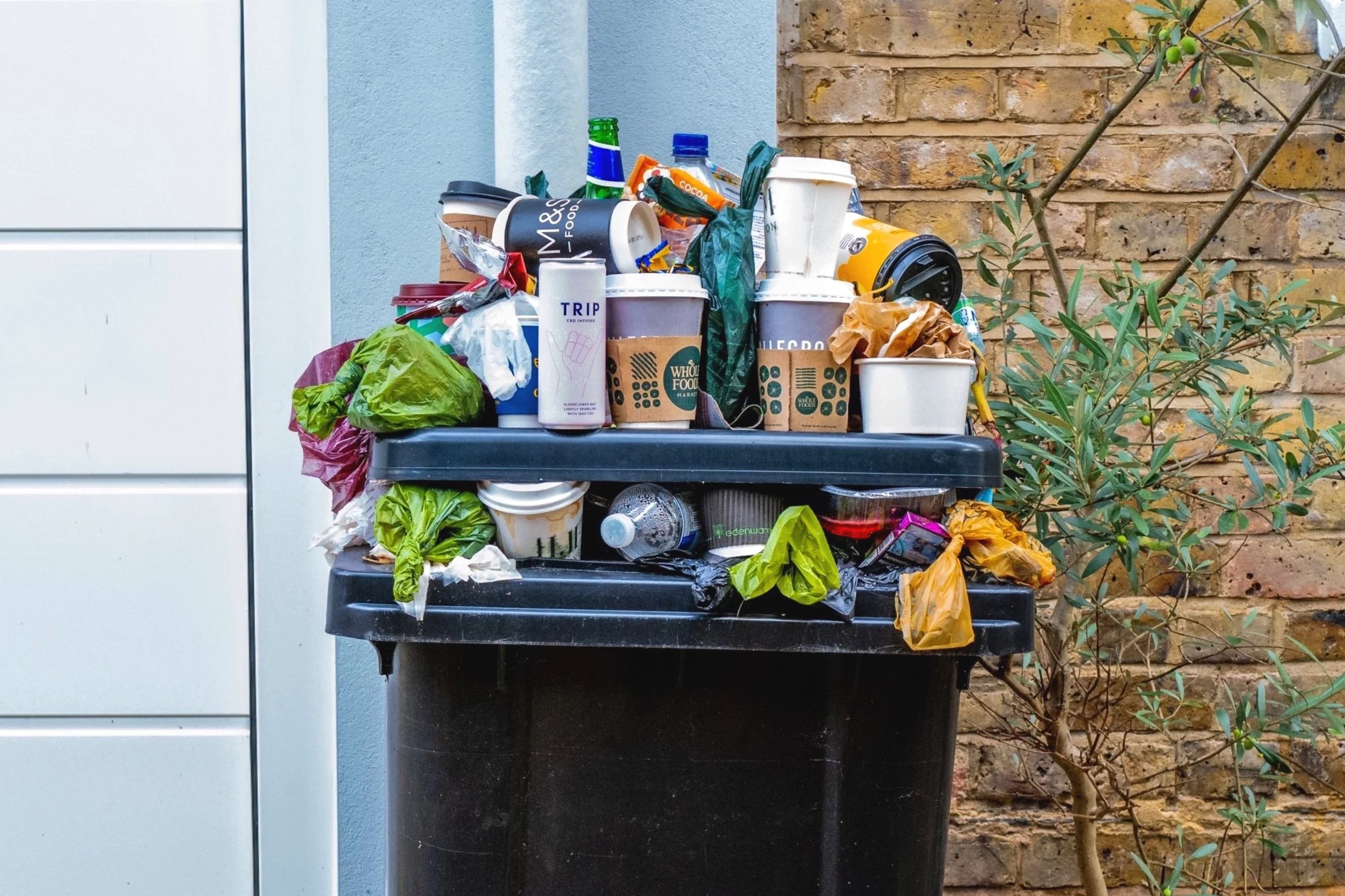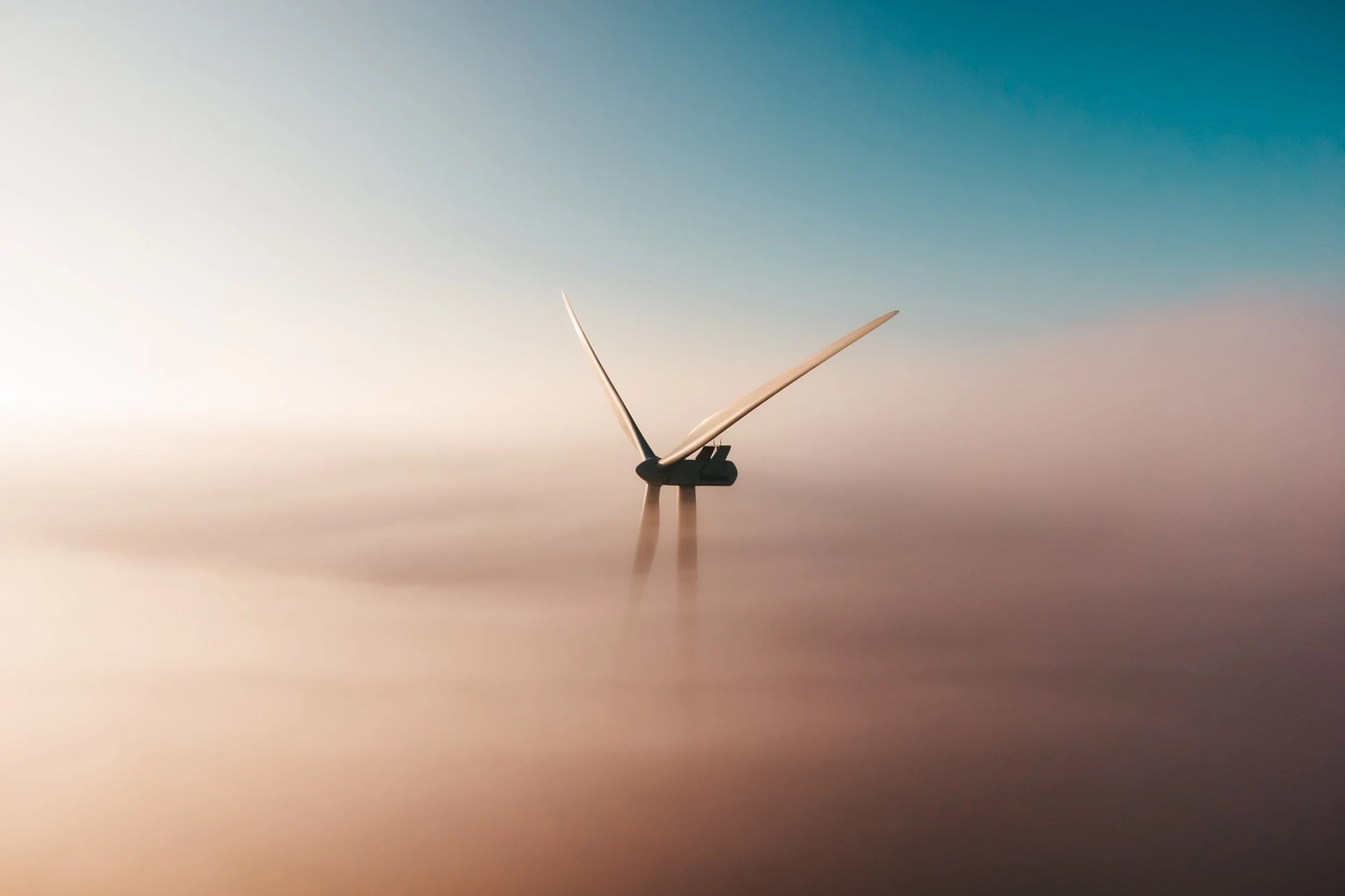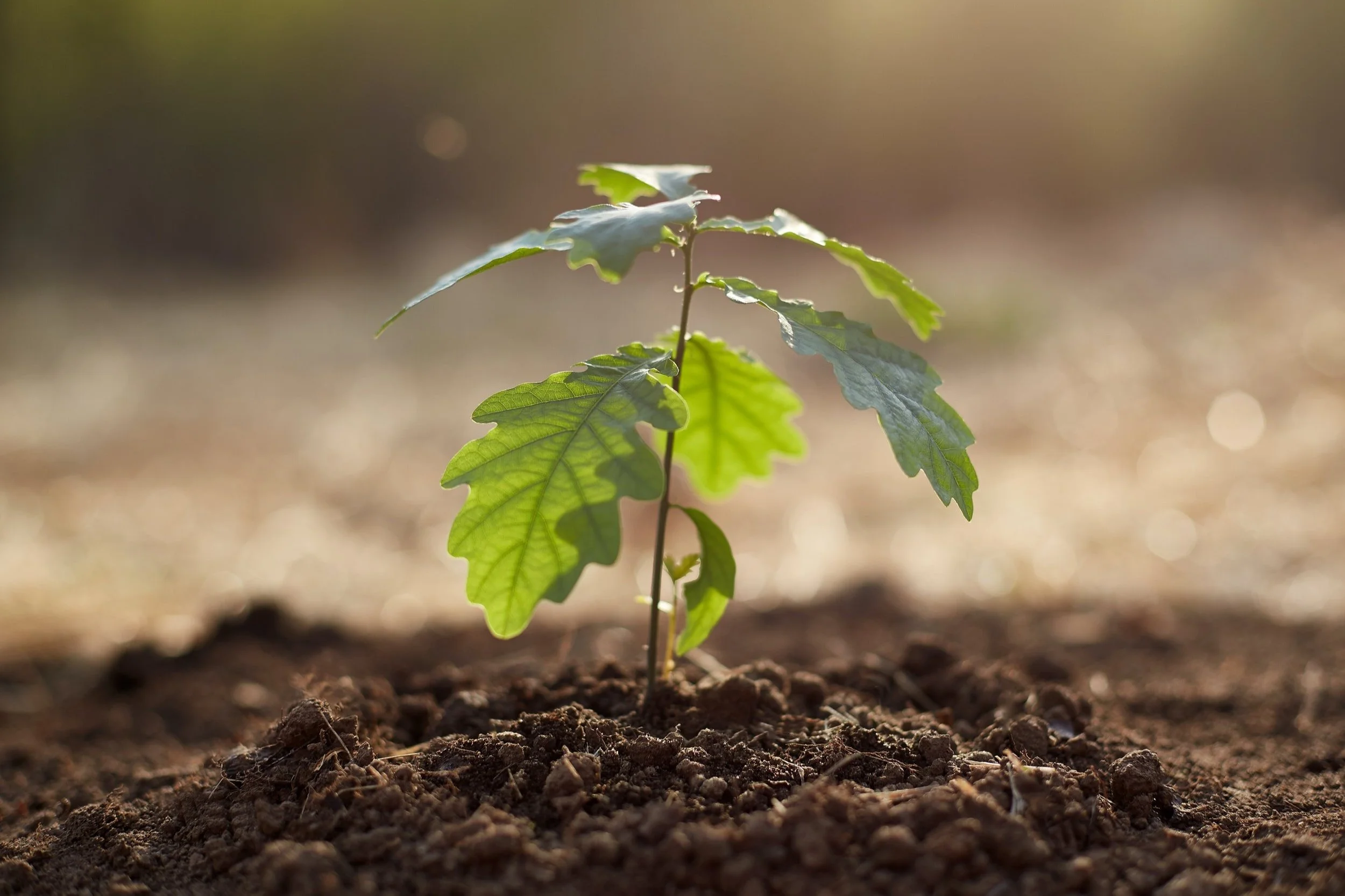7 steps to remove your carbon footprint
A person sits on a grassy cliff, looking out over a vast coastline where ocean meets forest. The scene reflects slow, intentional living — a pause to reconnect with nature and reconsider the need for constant movement.
Seven ways to walk lighter on the Earth
There are traces we leave behind that cannot be seen with the eye, only with the mind sharpened by conscience and care. Footprints that linger not on soil or snow, but in the heat-haze above our cities, in the drift of sea ice breaking far to the north, in the restless flicker of weather turned wild.
These are our carbon footprints — spectral signatures of our living. They are the measure of fossil fuels burned, of forests felled, of methane curled from the mouths of cattle and the belly of landfills. They are vast, yes, but not fixed. And this is the quiet wonder of it: they can be lessened. They can be lightened.
So here is a guide — not a sermon, but a companionable path — toward reducing that carbon shadow. It is not a race, nor an all-or-nothing plunge. Think of it instead as seven stepping stones across a flooded meadow. One by one, we cross.
A hand gently holds a clear lightbulb against a pastel sky, evoking the quiet power of mindful energy use. It symbolizes the shift from automatic consumption to intentional, low-impact choices — the first step toward lightening our carbon footprint.
Step one: reduce your energy usage — rewild your comfort
There was a time when people read the wind as scripture. When walls were thin and the body moved with the sky — when summer meant sweat and winter meant breath like fog. Now, we live in a climate of our own making. A seasonless indoors. The sun no longer warms us; electricity does. The cold no longer instructs us; we adjust the dial.
Heating and cooling account for nearly half the energy use in a typical home. Each time we flick a switch to seal ourselves off from weather, a power plant far away exhales another plume of invisible harm. We rarely see it. That’s the danger.
To rewild our comfort is not to shiver or suffer, but to remember that our bodies were once fluent in weather. We were built to adapt. Open the windows when you can. Let the morning in. Let the room cool down before rushing to heat it. Dress not for fashion but for function — layers of wool, loose cottons, the logic of centuries past.
Drink tea to warm your hands. Sit by the sunbeam. Pull blankets close. These are small acts, but they reorient you. They draw you back to the skin of the world. And every degree you do not force from a machine is a kindness given to the sky.
A streetcar glides through a city street at sunset, as people cross on foot in the fading light. The image captures the rhythm of low-impact commuting — walking, transit, community — and the shift from convenience to consciousness in how we move through the world.
Step two: the geography of enough
We are a people perpetually in motion. Our maps blur with routes and runways. Each departure is wrapped in plastic, each arrival accompanied by the hush of jet engines and the invisible drift of carbon trailing behind us like ghost-smoke.
But not every journey is necessary. Not every meeting needs a plane, nor every weekend an escape. What if we turned travel into something sacred again? Rare, deliberate, slow. Not a consumption of places, but a communion with them.
Consider the distance between you and the things you love. Could they be closer? Could work be done from a smaller radius? Could joy be found not five hundred miles away, but five minutes?
To reduce travel is not to reduce experience — it is to recalibrate its scale. Walk to the post office instead of driving. Take the train and feel the continent unfold beneath your feet. Choose one meaningful trip a year, and let it linger in your mind like perfume on a coat — instead of a dozen forgettable flights with little in their wake but receipts and emissions.
There is something deeply human about moving on foot, or by bicycle, or in shared silence on a bus. In those moments, you are not above the land but of it. You feel the contours of it. You see what lies between destinations.
Vibrant open-faced toasts layered with fresh avocado, banana, berries, and cherry tomatoes sit on a wooden board. This image celebrates plant-based meals made with simple, seasonal ingredients — a reminder that food can nourish both body and planet.
Step three: let the Earth feed you- grow, forage, share
The modern diet is a marvel of logistics. Mangoes in midwinter, avocados flown in from halfway across the world, meats shrink-wrapped in silence and secrecy. We eat from everywhere — and so the cost of our meals stretches far beyond our table.
Every food has a journey. Lettuce may have traveled a thousand miles. Beef may have passed through forests felled for pasture, fed on grain grown with nitrogen and drought, and cooled in factories that hum with fossil power. What we eat is not just calories — it is carbon.
But it does not have to be so. The soil beneath your feet — even in a city — still remembers how to nourish. A pot of herbs on the balcony. A tomato vine in a corner of the yard. Beans planted in old crates. Food grown close holds a different taste — not just of flavor, but of home.
Even if you grow only a fraction of what you eat, the act itself is an interruption of the industrial system. A seed planted is a seed withheld from global trade. A homegrown zucchini is one less wrapped in plastic, chilled in diesel-powered fridges, and trucked across a continent.
And there is foraging — ancient, subversive, sacred. To pluck wild dandelions, to gather blackberries from the hedgerow, to know which mushrooms nod at you with safety — these are skills our ancestors held close. When we gather from the wild with care, we do not take — we participate.
But perhaps most powerful of all is the act of sharing. Garden gluts passed over the fence. Preserves swapped for eggs. A loaf of sourdough left on a neighbor’s doorstep. These are not just transactions — they are ways of reweaving the local fabric, fraying after decades of hyper-individualism.
To eat from the Earth is to remember that we belong to it, not above it.
A trash bin spills over with coffee cups, plastic bags, and single-use packaging. This confronting image illustrates the hidden cost of convenience — a reminder of how quickly waste accumulates when materials are treated as disposable, not precious.
Step four: give the broken a second life
There is a quiet grief to the landfill — a sorrow that rises not in scent, but in scale. Mountains of what was once useful, now orphaned. Objects made by human hands, discarded by human haste. And still the tide grows. In the time it takes you to read this paragraph, the world has added thousands of tons more waste to its belly.
But it wasn’t always this way. Once, broken things were mended. Socks were darned, pots re-glazed, kettles soldered back into whistling. Waste was rare because materials were sacred. To throw something away was to admit failure — a failing in care, in gratitude, in design.
To reduce waste today is a rebellion against that forgetfulness.
Begin with noticing: the packaging you peel from a meal, the things you buy wrapped in more things. Ask not only what is this made of? but where will it go when I’m done with it? Compost the peels and stems. Reuse jars, bags, tins. Learn to sew a tear, fix a hinge, sharpen a blade.
Buy less — but better. Choose tools that endure.
There is a beauty in the mended, in the worn. These are the marks of use, of love, of persistence.
A single wind turbine emerges through soft clouds, catching the morning light. This ethereal image evokes the promise of renewable energy — quiet, vast, and rooted in the rhythms of the Earth, not its extraction.
Step five: what the wind whispers, the Earth provides
Every second, the Earth receives more solar energy than all of humanity could use in a year. It pours in from above, steady as breath, ancient as firelight. And yet we still burn ancient life — coal, gas, oil — to power our modern one.
But the wind still sings over the hills. The rivers still run with potential. The sun still warms every rooftop.
To support renewable energy is to listen again to what the planet already offers. Install solar panels, if you can. Let them sip the light and store it for your evenings. Or choose a green energy provider. Many utilities allow you to buy your electricity from wind farms or solar arrays, even if you live far from either.
It may cost a little more. But then, true things often do.
And if you cannot switch providers, switch your habits. Run machines when the sun shines. Dry your clothes in the wind. Cook when the power grid is calm. These are old ways made new — rhythm, timing, partnership.
The future does not lie in extracting more, but in receiving more wisely.
Hands search through colorful garments in a secondhand clothing rack — a small, hopeful act of resisting fast fashion and choosing sustainability.
Step six: fewer things, deeper threads
Every shirt has a story. Every dress a chain of consequences. The dye in the river. The thread in the hands of underpaid women. The shipping container crossing oceans in silence. Fast fashion is fast for us, but slow death for somewhere else.
A single cotton t-shirt may require 2,700 litres of water to make — enough for one person to drink for 900 days. And yet, we buy clothes like napkins. We wear them once and cast them aside. The carbon cost, the human cost, the ecological toll — all hidden in the seams.
But what if our clothes meant more?
To buy secondhand is to rescue forgotten stories. Each garment in a thrift shop once belonged to a life — a memory, a night out, a dance, a job interview. When you wear it, you extend that lineage. You refuse to participate in wasteful beginnings.
Mend your clothes. Learn to patch, to reinforce, to care. Let your wardrobe be small, but full of things that matter. A coat passed down. A scarf knit by a friend. Boots resoled twice.
Fashion will tell you this is boring. But fashion is fickle. The Earth is not.
A small sapling reaches toward the light — a quiet beginning in the long work of healing the earth.
Step seven: become a forest’s accomplice — plant, protect, praise
There is no act so symbolic — and so literal — as the planting of a tree.
To press your hand into soil, lower a sapling, and cover it again is to say: I will not see the full fruit of this, but I believe in it anyway. Trees ask nothing of us, and offer everything: shade, shelter, silence. And carbon capture — oh yes. A mature tree can draw in 48 pounds of carbon dioxide a year, quietly, without drama or ego.
But we are losing forests faster than we are growing them. For cattle, for palm oil, for paper. We take, and the green world thins.
To offset your footprint is not enough — you must re-root it. Plant trees in your garden, your street, your mind. If you have no land, donate to reforestation efforts that are ethical and indigenous-led. Protect the wild woods that still stand — they are not vacant land; they are cathedrals.
More than anything: learn the names of trees. Know them not as scenery but as kin. The oak that guards the crossroads. The willow by the drainage ditch. The almond that blooms too early now.
To love something deeply is to protect it. And in protecting it, we come home.
Coda: the quiet art of staying
To walk more lightly is not to vanish entirely, but to remain — more wholly, more wisely, more awake. These acts — small, slow, often unseen — are not the work of heroes, but of those who choose to live as if the future matters. Not in theory, but in texture. In breath. In soil and skin.
You will not be perfect. You are not meant to be. There will be contradictions. Days when you forget. Moments when convenience tempts. But this path does not demand purity — only presence. Only the willingness to begin again.
Every softened footprint is a note in a new song. Every mended shirt, every shared meal, every train ride taken instead of a flight — these are verses in a hymn to endurance. The Earth does not need martyrs. It needs lovers. Not those who declare their affection loudly, but those who return to it daily, with hands ready and hearts softened.
So let us walk this path not with guilt, but with grace. Not with fear, but with fidelity. We are still here. And that means it is not too late to stay — not just on the Earth, but with her.
And in that staying — gentle, deliberate, unfinished — may we learn how to belong, and how to begin again.








